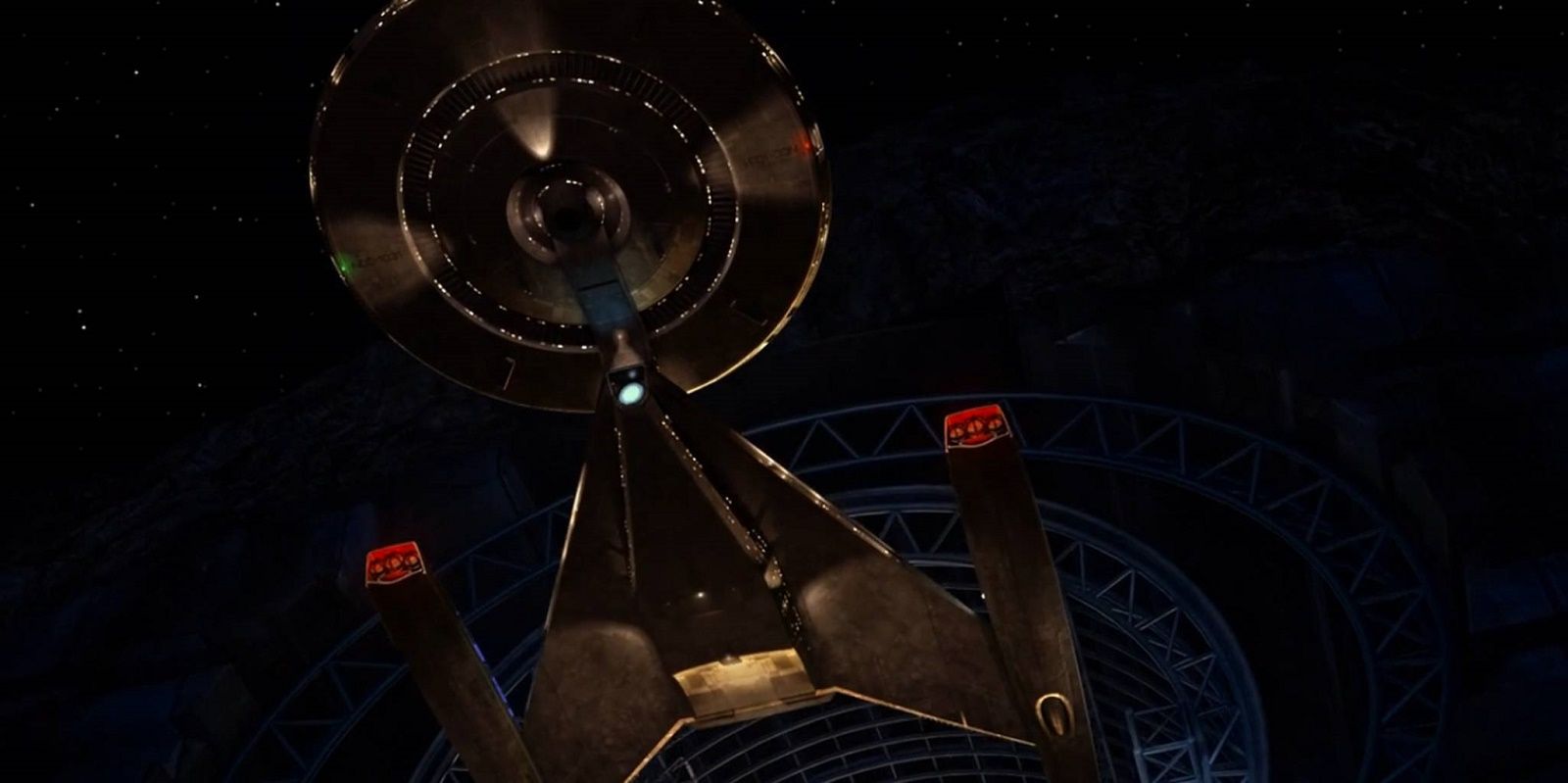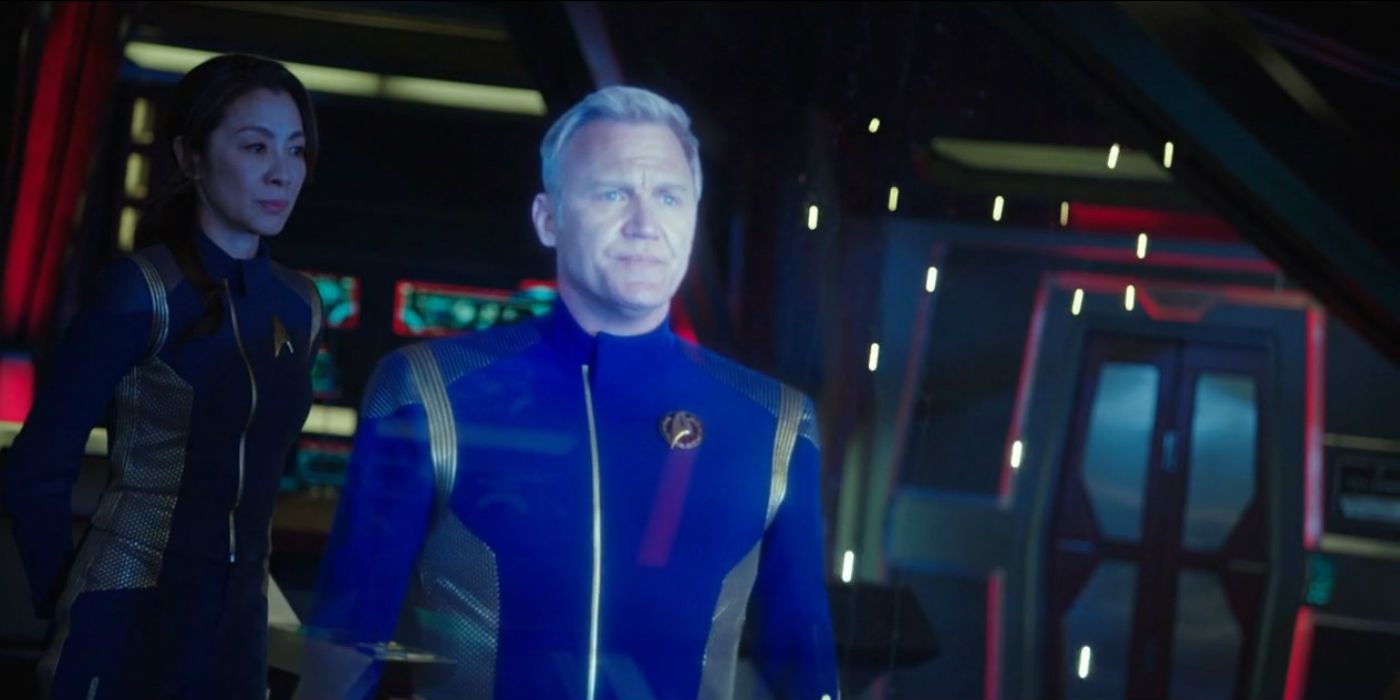One of the most noticeable things about Star Trek: Discovery is its relation to technology; mostly that it's too advanced for its era. Taking place just ten years before The Original Series, both Starfleet and the Klingon Empire have far more elaborate technology than we've seen in any series or film, including the recent reboots. To be fair, however, Star Trek has always had an odd relationship to its own technological history. Discovery does have a number of inaccuracies, but not as many as you'd think.To be clear, let's just set up a quick timeline:Star Trek Enterprise takes place from 2151-2161Star Trek: Discovery takes place in 2256Star Trek: The Original Series takes place from 2265-2293The Next Generation, Deep Space Nine, and Voyager take place from 2364-2379When Star Trek debuted in 1966, its technology was advanced. Portable communicators, tricorders, particle weapons, transporter beams, faster than light travel, and entire ships running on just a few hard disks were all novel ideas. Along with the bright 1960s palette, the series captured a sense of wonder and optimistic excitement for the future. As time disappeared, we ended up catching up to the Enterprise much faster than we thought. We're far beyond hard disk; our cell phones are much better than the communicators and tricorders, and the military is developing energy weapons (will the Second Amendment cover it? We hope so). By The Next Generation era, the future didn't seem as unlikely or as distant as it was before. Sure, they had the touchscreens, but we have that now too. Star Trek developed a staid kind of complacency. The wonder wasn't there.Enterprise, the first prequel series, did little to help. Taking place a hundred years before The Original Series, the show further confused an already choppy continuity. The ship had the designs and metallic sterility that the TNG-era ships had and looked nothing like the series it was meant to foreshadow. In TNG (2365), the holodeck was a new piece of technology. In Enterprise's fifth episode, œUnexpected, (2151) we see the Klingons bartering with the aliens-of-the-week for holodeck technology. Star Trek III: The Search for Spock (2285), Dr. McCoy is at a bar (what a surprise) where drunks are playing a hologram arcade game which is much less advanced than the one seen in Enterprise.Discovery also plays fast and loose with the franchise's history. Like Enterprise, Discovery eschews the analog technology and psychedelic color scheme of The Original Series. The ship designs are again more metallic like in the TNG rather than the ceramic frame from TOS. The too-dark bridge of the Shenzhou keeps its lights set at œperpetual mourning, but from what we can actually see, it's a mixed design of the TNG era and the reboot films. It's dotted in hard-light readouts, consoles, and holographic communication devices which weren't actually introduced until DS9 a few hundred years later.A common fan complaint about Discovery is its use of a Klingons cloaking device, even though the Klinks shouldn't have the technology for a decade when they obtained one from the Romulans in return for ships. This is not necessarily a continuity error. Given that the time differential is only ten years while cloaking devices themselves were around for over a hundred (as per Enterprise). It's reasonable to assume that T'Kuvma's band of outcasts managed to wrangle or trade for one. Given the reaction of the other Klingons at T'Kuvma's reveal, it's likely that this was an aberration and not yet a common feature on Klingon ships.Of course, there is also the possibility that none of these incidentals are continuity problems at all. Early in Discovery's production, Bryan Fuller (who served as showrunner the first of several showrunners) claimed that the series would take place in the Prime continuity. The Prime universe is the original timeline where TOS, TNG, DS9, VOY, and ENT took place rather than in the sheen of the JJ Abrams nu-Trek (Beyond notwithstanding).Discovery maintains the Enterprise-era ship aesthetics and returns to the old Stardate system from the Prime universe. However, the Apple store bridge design, warp effect, and the increased use of lens flare glints are clear references to the reboot series. Moreover, the Klingons look less like they did in TOS and TNG but more toward the version of Klingons from Into Darkness. The meld of old and new does distort which universe Discovery takes place in, and it's to the series' benefit.
Playing fast and loose with continuity would allow Discovery to cherry-pick what works while excising what doesn't from the different versions of the franchise. While Fuller did say this series is in the Prime timeline, this fact has been played down since, especially after he stepped down as showrunner. Given Star Trek's long and often contradictory history, splitting the difference with an alternate/mixed reality could be its best bet. It would allow the writers to make the references and connections that fans demand while also allowing new, uninitiated viewers a fresh start point.
Star Trek has played with a multiverse before in episodes like œMirror, Mirror and œParallels. One of Gene Roddenberry's most important contributions to the series was the Vulcan philosophy of IDIC: Infinite Diversity in Infinite Combinations, which celebrates the innumerable variables in existence that would allow for divergent universes to exist.
There is, also, one other possibility in explaining Discovery's technological leaps and oversights. It's a retcon. Comics fans know what retconning is, for all of its flaws and logical leaps. It stands for œretroactive continuity. In short, a retcon is a historical revision done intentionally to update, modify or erase preexisting events to cover up the plot holes that telling a new story may create. It's possible that Star Trek has been doing for years.
Roddenberry always imagined the Klingons and the Romulans in a more elaborate and alien way, so when Star Trek began its film series, Gene finally had the budget to remodel the two species. Neither change was referenced on-screen for decades, but it was merely accepted that this was the way they were meant to be. Outside of a funny meta-reference in DS9, the change in the Klingons was not raised again in-universe until Enterprise, when they devised a tedious three-episode arc to answering a question no one cared about in the first place. Adopting the retcon system would explain why the ship design was in-line with the modern era rather than The Original Series aesthetics which would look bizarre and anachronistic to a present-day audience. Discovery could be applying the same logic here.
The retcon approach would allow for Star Trek to tell stories in an unexplored section of the lore, but also re-create the sense of wonder by seeing these characters interacting with technology that is truly beyond our level, but still recognizable from our modern visual mores. Star Trek has always been more about the journey than the destination. It's about struggling and striving for something better. A large part of our lives now focuses on technology. Discovery, then, becomes an even more thematic title than before. We are discovering this news series and new creative uses and elaborations for technology. Again, Trek is returning to a place where they could inspire advancement. Where once the communicator inspired the cell phone, perhaps this new Star Trek will inspire something new.


